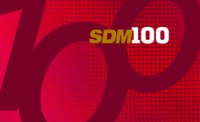Truth told, I usually read the Chicago Tribune and other newspapers online, on my laptop. The richness of digital content obviously cannot be matched, and the nature of my job keeps me in front of a computer often and a just a click away from the news. The story archives, photo banks, searchable listings, and supplementary video are all part of the interactive experience that more and more people are coming to expect when they seek information online.
Still, when I’m reading the Tribune online, one drawback is that I know I’m not getting all of the stories that the print edition provides. And that is a critical difference between a digital edition of a magazine and the content posted on Web sites. While not all of the editorial content in print generally gets posted online (and when it does, it could be located on Web pages where you may not intuitively find it), a digital magazine mimics the format of a printed magazine and includes all the content found in print; plus, it has capabilities to offer advanced features such as searching, forwarding, downloading, clicking on links to reach advertisers’ pages, and much more. That is why a digital edition of a magazine is the bridge between print and the online experience, blending the best features of paper with all the rich content available online.
There are economic and environmental benefits to digital editions, but more importantly, digital editions expand the reach of the information we work to provide the channel in ways that weren’t possible before. Digital editions provide richer content alongside greater mobility and accessibility of information on a global scale — which are just a few of the reasons why the offering of digital and online media is a change occurring throughout the publishing industry on a global scale.
It is not the only industry undergoing a global change. In this month’s cover story, “The New Security Order,” page 44, contributing writer Dan Dunkel states the security industry as also undergoing global changes, and he compares the rate of change in the two industries, suggesting that, “from a purely technical perspective, the pace of advancement and cultural change has altered the security profession more than any other industry, with the possible exception of print publishing.” Dunkel lays down a charge for the security channel to “seize the new opportunities to assist security executives in their mission” and “provide new services around the model of a total security assessment that embraces physical, logical and cyber security best practices.”
Assisting the security channel in its mission has been a chief goal for SDM the last 40 years — and as part of that, we’re always working to provide new services that will enhance the quality information we provide the channel.
That is why, beginning next month, our subscribers can now choose — print or digital — for their preferred format to receive SDM. Today most of SDM’s readers still want to receive a printed magazine, but there is a growing number that want to receive a digital edition — and it is our responsibility to give them that choice.
Now is a good time to make that choice because if you will prefer a digital edition, you will receive the first one in July if you sign up by June 17. And because all subscribers are required to renew their subscriptions each year beginning in May, you can easily make the selection when you renew. If you’ve already recently renewed, it’s easy enough to go back and select digital now by going to www.sdmmag.com/2010.
By selecting a digital edition of SDM, you will receive an e-mail each month letting you know when the issue is available. And anything that normally gets packaged and mailed with your regular issue of SDM comes with the digital edition, too, so you won’t be missing a thing. You’ll just be part of global change — in two industries at the same time no less.
Interesting Fact:
According to min online, research from the Consumer Electronics Association predicts that the market for e-reader devices — estimated to be approximately two million today — is expected to reach 16 million units by 2014.

